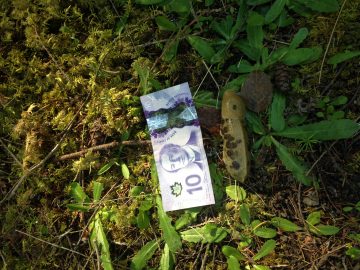What’s really unusual about the the Gulf Islands National Park Reserve is that there is a piece of the park on each of the 15 Gulf Islands. Each year, a bioblitz is being held on each island to gather information and specimens, hopefully working towards creating a complete picture of the park as a whole. The first one was Saturna Island in 2015, the next was Sidney Island, and this June, the bioblitz took place on Pender Island.

Photo credit: Sarah Yontez
The naturalist community on Pender Island is incredibly engaged and active. Of the 400 permanent residents who live on the South island, approximately 100 of those are in the Pender Island Field Naturalist club. The bioblitz scientists were able to connect with the president of the naturalist club, and they took the scientists to places they wouldn’t have been able to find on their own. With a bioblitz, it’s best to go without expectations because what’s found is always a surprise.
For example, in the last few years 16 insect species have been identified that were new to BC or new to Canada. Other important finds are non-indigenous species. These introduced species are usually from Asia or Europe. As it’s never known if the new-to-Canada species will become a problem, it is important to keep track so that action can be taken before it’s too late.

Large banana slug with ten dollar bill for comparison | Photo credit: Sarah Yontez
This bioblitz had a balance of public education and scientist-only collection time. A really popular and well-attended event was the pond poke. A pond poke allows families to poke around the pond with nets and have whatever they pull up be identified by scientists. Scientists will also bring things up from the water to talk about and get people interested in the local species, some of which people have never heard of before. It’s one of the most vital parts of a bioblitz.
“The education portion [of a bioblitz] is really critical, I think, because unless the public understands and gets to know these critters, they’re not going to care about them and preserving them and their habitats”, says Karen Needham, the Assistant Curator of the Spencer Entomological collection.
Another really popular public activity, which happens at night, is the black light trapping event. How it works: a white sheet with a mercury vapour light on one side and a UV light on the other attracts flying insects, which everyone helps to catch for the scientists to examine. It was a cold June this year, so there wasn’t very much to catch, but it was a lot of fun for those who attended.
The Pender Island biobltiz, like all bioblitzes, was full of activity by scientists and the public alike. As always, there’s something for every level of interest and experience. And something new to find.

Photo Credit: Sarah Yontez
Interested in joining a bioblitz and learning more about biodiversity? Check out the events calendar on the Bioblitz Canada website and on the Parks Canada website for ones near you.
